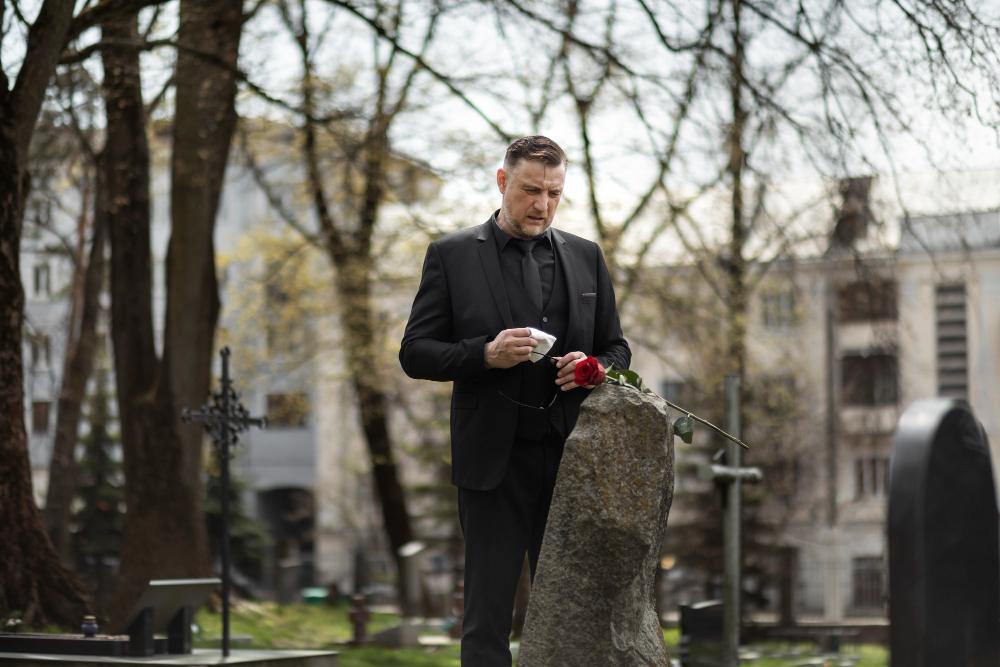Quantum Physics Suggests Death May Just Be An Illusion
Depending on religious upbringing and numerous other factors, the idea of death has varying implications for people around the world. To some, it’s a simple end-of-life process, whereas, for others, it’s the transmigration of the soul from one body to another or another realm beyond the boundaries of our universe.
However, various experiments carried out in the field of quantum mechanics suggest that reality and our observation of it might all be constructs created by our consciousness. If so, this would suggest that death is nothing more than an illusion.
The Natural Cycle of Life
For as long as humans have possessed the ability to question reality, no doubt we’ve pondered upon the question: what happens when we die?

Source: kelvin agustinus/Pexels
Despite our greatest achievements in the modern era, our inability to answer this question continues to irritate many. But what if we are looking at death in the wrong way? According to quantum mechanics, it could be nothing more than a mere illusion.
Experiments in Quantum Mechanics
Quantum mechanics is the study of subatomic particles or the building blocks of the universe. It has helped us better understand our world, but many researchers suggest it goes further than this and that it could help us define reality and consciousness.

Source: Wikimedia
For many years, it was believed that humans were products of creation and were considered separate from the universe as a whole. However, experiments carried out in quantum mechanics have suggested otherwise.
Does Death Really Exist?
Instead of seeing ourselves as an external object created by the universe, researchers such as Dr. Robert Lanza have theorized that there is more to reality than meets the eye.

Source: Wikimedia
He suggests humanity should adopt a biocentric approach, which aims to incorporate life and consciousness into one equation.
Consciousness Creates the Universe
Dr. Lazna first shared his groundbreaking research with the world in 2010 when he published Biocentrism: How Life and Consciousness are the Keys to Understanding the True Nature of the Universe.

Source: Felix Mittermeier/Pexels
According to Lanza, our entire universe is in a state of superposition, and the observer is a necessary component that ultimately collapses this so-called state of probabilities into what we perceive as reality.
The Theory of Consciousness
Biocentrism is centered on the idea that life and biology are the main aspects of our being, reality, and the cosmos. Lanza’s number one point explains that consciousness creates the universe, not the other way around, as we’ve been taught for so long.

Source: unknown
The doctor argues that if science truly wants to obtain a “theory of everything,” it must prioritize biology over physics and chemistry.
Death is an Illusion
From this theory, another highly debated concept arises, which aims to suggest that death is nothing more than a concept.

Source: Freepik
Biocentrism argues that even though the masses around the world accept the common idea of death, it doesn’t exist in the way that many assume. As consciousness is eternal, the same can be said for all humans and living things.
Consciousness Directly Affects Reality
According to biocentrism, space and time are also constructs of consciousness; several experiments have proven this in the past.

Source: Freepik
The most famous of all is the double-slit experiment, first conducted by Thomas Young in 1801. The results of this simple experiment have had long-lasting implications for both quantum mechanics and spiritual beliefs.
The Double Slit Experiment
During the double-slit experiment, Young observed that light behaves differently when it is not observed. For example, if no one is watching, it behaves like a wave.

Source: Freepik
However, when recording instruments are turned on, it acts like a particle. This simple observation would go on to revolutionize quantum mechanics.
Implications of the Double Slit Experiment
The double-slit experiment has been conducted on numerous occasions, and the results are always the same. The results suggested that light and matter could take on the form of particles and waves. However, they went much deeper than this.

Source: Wikimedia
It suggests the observer’s consciousness directly affected the outcome of the experiment and, thus, reality. Many modern spiritual teachers have used this physics experiment as evidence of our connectedness to the universe.
Heisenberg Uncertainty Principle
The 20th-century theoretical physicist Werner Heisenberg is another prominent figure who produced a theory that greatly aligns with Lanza’s biocentric model.

Source: Wikimedia Commons
His uncertainty principle advocates that we can never simultaneously measure a particle’s exact location and momentum.
Space-time is a Construct of Consciousness
This observation is coupled with quantum entanglement, the phenomenon in which two subatomic particles can be linked even if separated by vast distances.

NASA/WMAP Science Team/Wikimedia Commons
This further emphasizes the idea that space and time are simply constructs of consciousness.
Death Cannot Exist
So, taking into account all of the observations made in quantum mechanics, what we are left with is a timeless and spaceless universe in which death cannot exist.

Source: Wikimedia
According to this theory proposed by biocentrism and backed by quantum mechanics, immortality wouldn’t be an infinite and continuous existence in time but instead an existence outside of time.
Light Particles Communicate Instantaneously
Recent observations further support this idea, suggesting particles of light can communicate instantly as if nothing were separating them.

Source: NASA Goddard Space Flight Center/Wikimedia Commons
Some researchers who have studied these findings and quantum mechanics in general have suggested that our current model of space-time, which ultimately includes life and death, is flawed.
The Many Worlds Theory
Quantum mechanics continues to question our understanding of reality, leading to several theories that support Dr. Lanza’s biocentric model of reality.

Source: Wikimedia
One example is the “many worlds” theory, which suggests an infinite number of parallel universes exist in which all possible outcomes take place simultaneously.
The Illusion of Death
The many worlds theory further implies that death is nothing more than an illusion, as we are all still alive despite death having occurred an infinite number of times in parallel universes.

Source: Freepik
The implications of this theory are not just mind-boggling but are also awe-inspiring.
The Fear of Death
Unfortunately, a strong fear of death can have a significant influence on human behaviors and how we go about our everyday lives.

Source: Freepik
For physicists, on the other hand, the implications of quantum mechanics and the idea that reality is the product of consciousness and is upheld by observation can be either unsettling or rather comforting.
Lanza’s Biocentrism Theory
Despite the compelling evidence from quantum mechanics, Dr. Lanza’s biocentrism theory, which intricately blends philosophy and science, remains a subject of intense debate among scientists.

Source: Wikimedia
Many critics of his work suggest that the theory lacks any real mathematical evidence and consists mostly of speculations, which is often considered a fair judgment.
Critics of Biocentrism
As there is no real mathematical formula to further back up Dr. Lanza’s theory, it has struggled to gain traction in the academic world despite being an accredited researcher in his field.

Source: Freepik
Harsher critics have called Lanzas’ book a classic attempt at a biologist attempting to play physicist, suggesting his take on space-time is just one step too far.
Further Criticism of Lanza’s Theory
Critics have also called out the biocentric idea of death being a concept, arguing that without any solid evidence, the idea simply lacks scientific credibility.

Source: Freepik
Many argue that if consciousness could continue in another form after death, why have we yet to find empirical evidence of this? Others suggest that the entire concept belongs in the metaphysical section of a bookstore.
A Bridge Between Science and Spirituality
Despite the criticism, biocentrism has garnered an impressive following, with some calling it a bridge between science and spirituality.

Source: Raimond Klavins/Unsplash
Lanza and astronomer Bob Berman, who helped co-author the first book, have since released another titled Biocentrism: Rethinking Time, Space, Consciousness, and the Illusion of Death.
New Scientific Discoveries
The second book suggests that the current model of reality is worn out and appears more dated with each passing year before going on to speak about new scientific discoveries that resonate with their theory.

Source: Freepik
According to their book, scientists have more or less agreed that the universe is infinite. Yet, modern physicists lack the ability to explain what this truly means. However, Lanza suggests it could be better understood through their biocentric model.
Researcher Aims to Better Understand the Universe
Despite the controversy, Dr. Lanza remains committed to his research and will continue to promote his biocentric model as a means to better understand reality and the universe as a whole.

Source: Wikimedia
He believes that his work on consciousness has the potential to revolutionize our understanding of reality, death, and the universe as a whole.
Challenging the Traditional View of the Universe
Dr. Lanza’s theory challenges the traditional view of separation between our minds and the universe.

Source: Wikimedia
It suggests that everything, including life, death, and the afterlife, is a product of consciousness. Embracing such concepts could lead to a profound shift in our understanding of existence.
